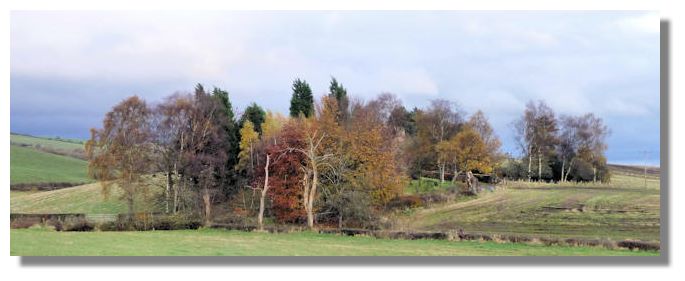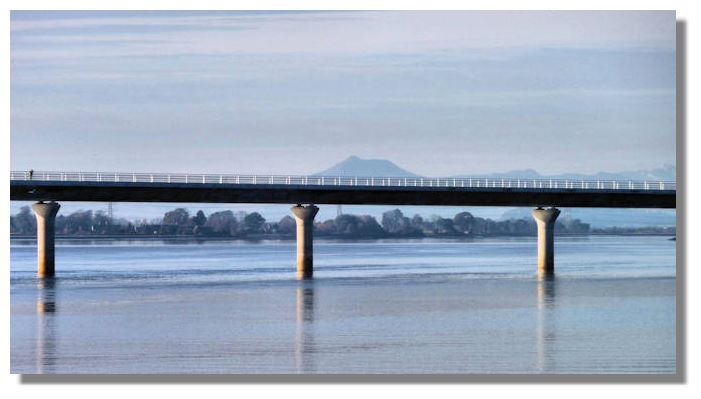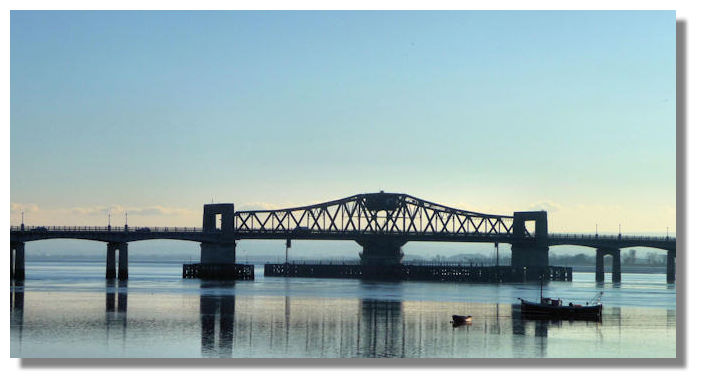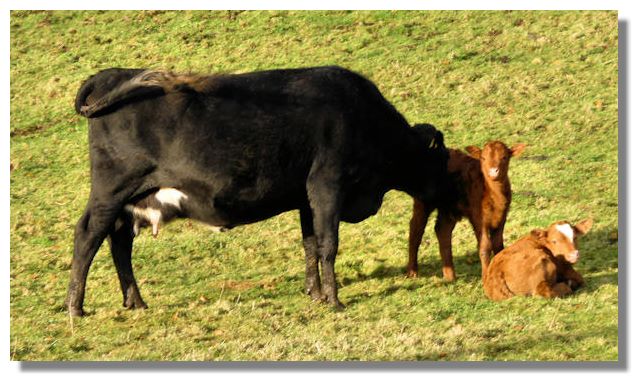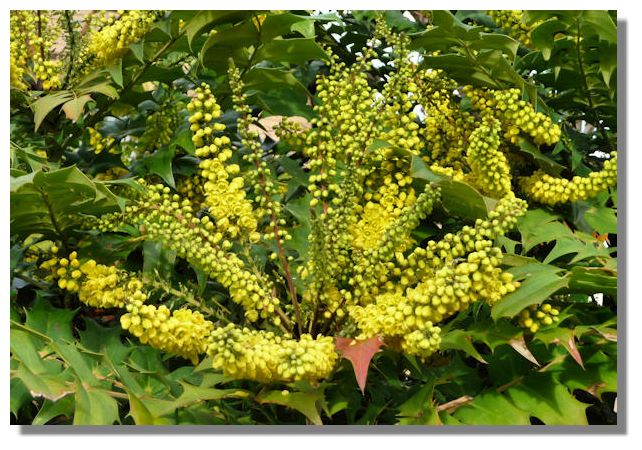The Rampant Scotland Newsletter includes a number of photographs which illustrate the weather and the seasons, plus the flora and fauna of the current week around Scotland. This separate "colour supplement" displays some more pictures, in a larger format. Here is this week's crop of Scottish views!
Many of the pictures for this colour supplement are taken when the sun is shining - but as is clear from a casual reading of the reports on the weather in the main newsletter, Scottish weather isn't always like that! But even on a dull, cloudy day like last Sunday, there are plenty of attractive pictures to be taken, such as this "treescape" in the countryside just north of Glasgow.
The bridge which will help to relieve the current congestion on the Kincardine Bridge was initially called just the "Upper Forth Crossing". Despite no part of the £120 million bridge over the river Forth being actually inside the county of Clackmannanshire, the local council there mounted a vociferous campaign to have the new crossing named the "Clackmannanshire Bridge". When Fife and Falkirk (which are the counties connected by the new link) woke up, they tried to get another name adopted - such as "Kingdom Bridge" (after the historic kingdom of Fife) and "Wallace Bridge" (after the Scottish hero whose famous victory at Stirling Bridge was some miles up river). There was even a suggestion of the "Fourth Bridge" - a pun on the river Forth and the bridge being the fourth bridge across the Forth, upstream from the mouth of the river, after the Forth (rail) Bridge, the Forth Road Bridge and the existing Kincardine Bridge. Eventually, the Scottish government opted for the name "Clackmannanshire Bridge" - a long name to acknowledge the involvement of Scotland's smallest county.In this photo, the smooth lines of the new bridge are broken by an electricity pylon in the distance.
Here is a closer view of part of the Clackmannanshire Bridge. Located just up-river of the Kincardine Bridge, construction began in June 2006 and the new crossing is to be open to traffic on Wednesday 19 November 2008. The bridge deck is 1.2 kilometres (three-quarters of a mile) long, weighs 35,000 tonnes and sits on 25 piers which are each filled with 840 tonnes of concrete. The project has also involved extensive upgrades to the connecting trunk road network, with 3.6 miles (6 kilometres) of roads and 3 miles (5 kilometres) of cycleways being constructed, as well as associated roundabouts.
The original Kincardine Bridge (seen here) was built between 1932 and 1936. It was the first road crossing of the River Forth downstream of Stirling and was completed nearly thirty years before the more famous Forth Road Bridge which stands fifteen miles to the south-east, nearer Edinburgh. The bridge was constructed with a swinging central section, to allow larger ships to sail upstream to port in Alloa. This remained in use until 1988 - causing major tailbacks on the A876 road whenever a ship had to be allowed through. When the Forth Road Bridge is closed (due to high winds, traffic accidents or repairs), the Kincardine Bridge (with only a single lane in each direction) becomes the diversionary route for traffic north from Edinburgh and eastern Scotland. As a result of the high volume of traffic using the bridge, the town of Kincardine is frequently congested. Following the opening of the new Clackmannanshire Bridge, the Kincardine Bridge will be closed for 12-18 months to allow for essential maintenance and repairs. It will therefore not be until 2010 that the full benefit of the new bridge will be realised.
Lambs and calves are more often born in the spring or summer, but there are always exceptions as these two demonstrate. They were being licked by their mother and had no identification ear tags, so they had presumably been born not long before this picture was taken (last Sunday).
There are not many garden plants in Scotland that come into bloom in November - or even later in some cases. But the long spikes of small, bell-shaped yellow flowers of Mahonia do just that, on tall shrubs with holly-like evergreen leaves. The flowers are often sweetly scented and afterwards there are small, grape-like berries. The name Mahonia honours the Philadelphia horticulturist Bernard McMahon, who introduced the plant from materials collected by the Lewis and Clark Expedition in North America.If you want to look back at earlier editions of this Colour Supplement, there is an Index Page
